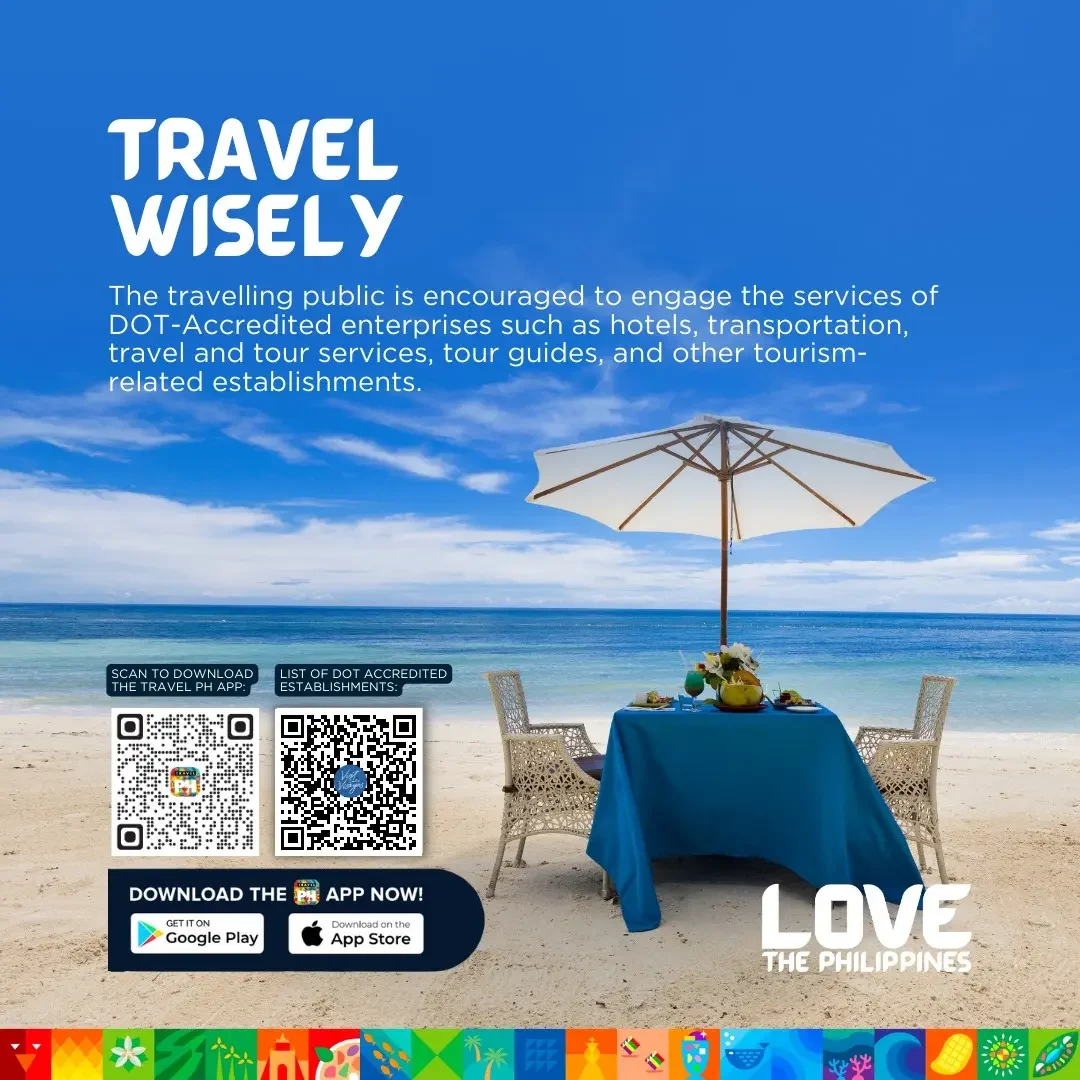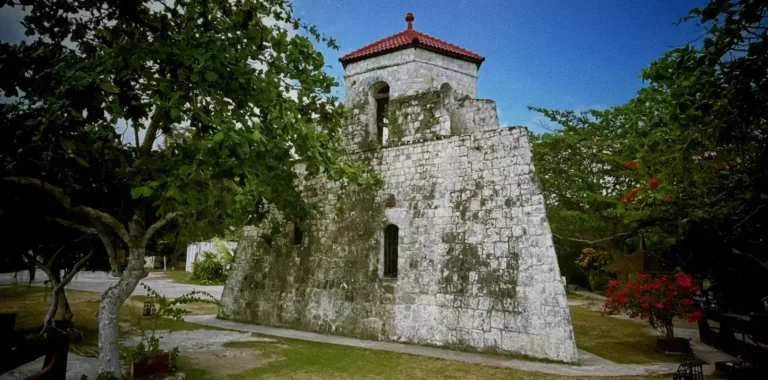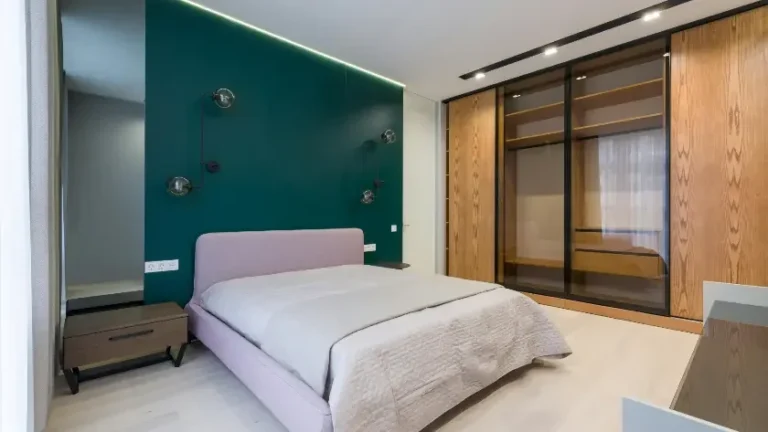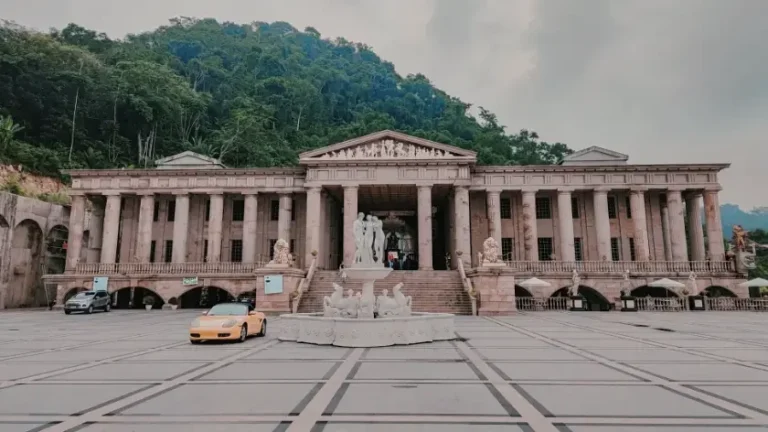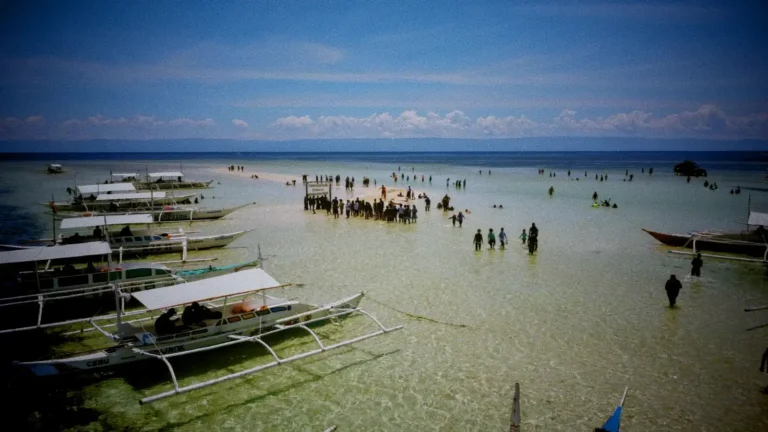Complete Philippines Travel Insurance Guide: Safety & Everything You Need to Know for 2025
Your ultimate resource for safe, insured, and unforgettable travel to the Philippines
Planning your dream trip to the Philippines? From the pristine beaches of Palawan to the chocolate hills of Bohol, the Philippines offers incredible adventures at every turn. However, like any international destination, proper preparation is key to ensuring your trip goes smoothly. This comprehensive guide covers everything from Philippines travel insurance requirements to safety tips, cultural insights, and budget planning—everything you need for a worry-free Philippine adventure.
🛡️ Understanding Philippines Travel Insurance: Your Complete Protection Guide
Travel insurance isn’t just a “nice to have” for Philippines travel—it’s your financial safety net in a country where medical costs can quickly spiral and weather-related disruptions are common. Here’s everything you need to know about protecting your investment and your health.

The Two Essential Types of Travel Insurance
1. Trip Protection Insurance
This protects your financial investment in your Philippines vacation.
What’s Covered:
- Trip Cancellation: Full reimbursement if you can’t travel due to covered reasons
- Trip Interruption: Partial refunds if you need to cut your trip short
- Travel Delays: Hotel and meal expenses if flights are delayed 6+ hours
- Missed Connections: Additional transportation costs to catch up with your itinerary
- Baggage Loss/Delay: Reimbursement for lost luggage or emergency purchases
- Tour and Activity Cancellations: Refunds for prepaid excursions that can’t happen
Real-World Philippines Scenarios:
- Typhoon cancels your flight to Cebu, forcing trip postponement
- Family emergency requires early departure from Boracay
- Airline loses your luggage containing diving equipment for your Palawan trip
- Political unrest in a specific region forces itinerary changes
2. Travel Medical Insurance
Essential for healthcare protection in the Philippines.
Comprehensive Medical Coverage Includes:
- Emergency Medical Treatment: Doctor visits, diagnostic tests, prescriptions
- Hospitalization: Private room coverage in accredited hospitals
- Emergency Surgery: Including specialist procedures not available locally
- Medical Evacuation: Transport to Manila or home country for serious conditions
- Repatriation of Remains: Coverage up to $1,000,000 for worst-case scenarios
- Dental Emergency: Pain relief and emergency dental work
- Mental Health Crisis: Emergency psychiatric care and counseling
Why Medical Insurance is Critical in the Philippines:
- Many hospitals require cash deposits before treatment (₱50,000-₱200,000/$900-$3,600)
- Private hospitals offer better care but cost 5-10x more than public facilities
- Medical evacuation from remote islands to Manila costs $15,000-$50,000+
- Prescription medications may be unavailable in rural areas

📋 Philippines Entry Requirements 2025: What Every Tourist Needs
Universal Requirements (All Nationalities)
✅ Passport Validity: Must be valid for at least 6 months beyond your intended departure date ✅ Proof of Onward Travel: Return ticket or onward travel to third country ✅ Financial Capacity: Bank statements or credit cards showing sufficient funds ($1,000+ recommended) ✅ Accommodation Proof: Hotel bookings or invitation letter from Filipino hosts
Country-Specific Visa Requirements
Visa-Free Countries (30 Days Maximum Stay):
- United States, Canada, Australia, New Zealand
- All EU countries, United Kingdom
- Japan, South Korea, Singapore, Malaysia, Thailand
- Brazil, Mexico (and many others)
Countries Requiring Tourist Visas:
- China, India, Russia
- Most African and Middle Eastern countries
- Some South American nations
Visa Extension Options:
- First extension: 29 days (total 59 days) – ₱3,030 ($54)
- Subsequent extensions: 30 days each – ₱2,330 ($42) per extension
- Maximum tourist stay: 3 years with proper extensions
Health Requirements
- No mandatory vaccinations for most travelers
- Yellow fever certificate required if arriving from infected areas
- COVID-19 restrictions may apply (check current requirements)

💰 Travel Insurance Costs & Coverage Recommendations
Budget-Friendly Coverage Options
| Coverage Level | Cost per Week | Medical Coverage | Trip Protection | Best For |
|---|---|---|---|---|
| Basic | $15-30 | $50,000 | $2,500 | Budget backpackers, short trips |
| Standard | $35-65 | $100,000 | $5,000 | Average tourists, island hopping |
| Premium | $75-120 | $500,000 | $10,000 | Luxury travelers, adventure activities |
| Comprehensive | $100-180 | $1,000,000 | $25,000 | High-value trips, senior travelers |
Recommended Minimum Coverage for Philippines Travel:
- Emergency Medical: $100,000 minimum ($500,000+ for adventure activities)
- Emergency Evacuation: $1,000,000 (critical for remote island emergencies)
- Trip Cancellation: 100% of trip cost
- Baggage Coverage: $2,500 per person
- Activity Coverage: Includes scuba diving, island hopping, volcano hiking
Special Considerations for Philippines Travel:
- Typhoon Season Coverage (June-November): Ensure weather-related cancellations are covered
- Adventure Activity Coverage: Many policies exclude diving, volcano hiking, or water sports
- Pre-Existing Medical Conditions: Must be declared and may require additional premium
- High-Value Items: Electronics, cameras, and jewelry need separate coverage
🎯 Get Your Philippines Travel Insurance:
💼 Compare Travel Insurance Plans – Instant quotes from top providers
🏥 Medical-Focused Coverage Options – Specialized health insurance for travelers
🏥 Healthcare System in the Philippines: What Tourists Need to Know
Hospital Types and What to Expect
Private Hospitals (Recommended for Tourists)
Major Chains:
- Makati Medical Center (Manila): International standard, English-speaking staff
- St. Luke’s Medical Center: Multiple locations, excellent emergency care
- Asian Hospital (Alabang): Modern facilities, popular with expats
- Chong Hua Hospital (Cebu): Best private care in Visayas region
- The Medical City (Ortigas): Comprehensive specialty services
What to Expect:
- English-speaking doctors and nurses
- Modern equipment and international standards
- Payment: Cash or credit card required upfront
- Typical Costs: Doctor consultations $25-50, Emergency room $100-200
Public Hospitals (Limited Tourist Use)
- Long waiting times (2-8 hours for non-emergencies)
- Limited English proficiency among staff
- Basic facilities but competent emergency care
- Very affordable but cash-only payments
Common Health Concerns for Philippines Tourists
Stomach Issues (Most Common)
- Traveler’s Diarrhea: Affects 30-40% of visitors
- Food Poisoning: From street food or poor food handling
- Prevention: Bottled water only, avoid raw foods, choose busy restaurants
- Treatment Cost: $20-50 for basic medication and consultation
Tropical Diseases (Rare but Serious)
- Dengue Fever: Mosquito-borne, no vaccine for travelers
- Malaria: Only in Palawan and remote southern islands
- Chikungunya: Mosquito-borne, causes joint pain
- Prevention: DEET repellent, long sleeves at dawn/dusk, air-conditioned rooms
Injury-Related Incidents
- Motorcycle Accidents: Very common, especially in tourist areas
- Cuts from Coral: While snorkeling or diving
- Sunburn/Heatstroke: Intense tropical sun
- Jellyfish Stings: Common in some beach areas during certain seasons
Pharmacy and Medication Access
- Mercury Drug: Largest chain, found everywhere
- Watsons: Another reliable pharmacy chain
- Prescription Requirements: Many medications available without prescription
- Costs: Generally 50-70% cheaper than Western countries
🚨 Comprehensive Safety Guide for Philippines Travel
Crime Prevention and Personal Security
Common Tourist-Targeted Crimes
Pickpocketing and Theft:
- High-Risk Areas: Crowded markets, jeepneys, Manila’s tourist districts
- Prevention: Use hotel safes, carry copies of documents, avoid flashy jewelry
- If Victimized: Report to police (for insurance claims), contact embassy if passport stolen
Scams Targeting Tourists:
- Overcharging: Always ask prices upfront, use ride-sharing apps
- Fake Police: Real police carry proper ID and don’t demand spot fines
- ATM Scams: Use bank ATMs inside branches, cover PIN entry
- Romance Scams: Be cautious of new relationships, especially online matches
Robbery (Rare but Serious):
- Prevention: Don’t walk alone at night, stay in well-lit areas
- If Confronted: Comply with demands, prioritize personal safety
- Aftermath: Report to police immediately, contact insurance company
Transportation Safety
Road Safety (Major Concern):
- Motorcycle Taxis: Always wear provided helmets, avoid during rain
- Tricycles: Negotiate price before riding, check vehicle condition
- Jeepneys: Watch belongings, sit near exit, avoid late-night rides
- Car Rentals: Inspect thoroughly, ensure comprehensive insurance
Driving in the Philippines:
- Traffic: Chaotic but follows informal rules, stay defensive
- Road Conditions: Variable quality, especially in rural areas
- Night Driving: Avoid if possible due to poor lighting and aggressive drivers
- Insurance: Ensure comprehensive coverage, including third-party liability
Natural Disaster Preparedness
Typhoon Safety
Before Typhoon Season:
- Monitor weather forecasts from PAGASA (Philippine weather service)
- Have evacuation plan and emergency contacts
- Keep important documents waterproofed
During Typhoon Warnings:
- Follow local evacuation orders immediately
- Stock food, water, and battery-powered devices
- Stay indoors and away from windows
- Avoid travel entirely during typhoon conditions
Earthquake Preparedness
- Philippines sits on Pacific Ring of Fire: Regular seismic activity
- Hotel Safety: Choose newer buildings with earthquake compliance
- During Earthquake: Drop, Cover, Hold On – don’t run outside
- After Earthquake: Check for injuries, exit carefully if building damaged
Water and Swimming Safety
- Beach Safety: Strong currents common, swim only in designated areas
- Diving Safety: Use certified operators, never dive alone
- Boat Safety: Ensure life jackets available, avoid overloaded vessels
- Water Quality: Swimming pools in reputable hotels generally safe
💵 Detailed Budget Planning for Philippines Travel
Comprehensive Daily Budget Breakdown
Budget Traveler ($25-40 per day)
Accommodation: $8-15/night
- Hostel dorms: $5-10
- Budget hotels: $10-15
- Guesthouses: $8-12
Food: $8-12/day
- Street food breakfast: $1-2
- Local restaurant lunch: $2-4
- Casual dinner: $3-5
- Snacks and drinks: $2-3
Transportation: $3-8/day
- Local jeepney rides: $0.25-0.50 per trip
- Tricycle short distance: $1-2
- Longer bus rides: $3-10
Activities: $5-15/day
- Beach access: Free or $1-2
- Local tours: $10-20
- Island hopping: $15-25 (shared)
Mid-Range Traveler ($50-90 per day)
Accommodation: $20-40/night
- Boutique hotels: $25-40
- Beach resorts: $30-50
- Airbnb apartments: $20-35
Food: $15-25/day
- Hotel breakfast: $3-5
- Restaurant lunch: $5-8
- Nice dinner: $8-15
- Beverages and snacks: $3-5
Transportation: $10-20/day
- Grab rides: $2-5 per trip
- Private van tours: $15-30 (split cost)
- Domestic flights: $30-80 for island hopping
Activities: $20-40/day
- Guided tours: $25-50
- Diving trips: $30-60
- Cultural experiences: $10-25
Luxury Traveler ($150-400+ per day)
Accommodation: $80-300+/night
- 5-star beach resorts: $150-400
- Luxury eco-lodges: $100-250
- Premium city hotels: $80-200
Food: $40-80/day
- Fine dining restaurants: $25-50 per meal
- Resort dining: $15-30 per meal
- Premium beverages: $5-15
Transportation: $30-100/day
- Private car and driver: $50-80/day
- Private plane transfers: $200-500
- First-class flights: $100-300
Activities: $50-200/day
- Private island tours: $100-300
- Premium diving: $80-150
- Spa treatments: $30-100
Money-Saving Strategies
Booking and Planning Savings
- Book 3-4 months ahead: Save 20-40% on accommodations
- Travel in shoulder season: May-June or September-October for 30% savings
- Package deals: Flight + hotel combinations often cheaper
- Group travel: Split costs for private tours and transportation
On-Ground Savings
- Eat like locals: Street food and carinderias are delicious and cheap
- Use public transport: Jeepneys and buses cost fraction of private transport
- Negotiate respectfully: Especially for souvenirs and unmetered services
- Stay longer: Weekly/monthly rates for accommodations
Activity Savings
- Group tours vs. private: Save 50-70% by joining group activities
- Free activities: Beach time, hiking, cultural sites often free
- Local operators: Often cheaper than international tour companies
- Happy hour dining: Many restaurants offer significant discounts
🎯 Essential Philippines Travel Preparations
Documentation and Legal Preparations
Critical Documents Checklist
✅ Passport: Valid 6+ months, with 2+ blank pages ✅ Travel Insurance Policy: Print copies and save digital versions ✅ Flight Confirmations: Print boarding passes when possible ✅ Hotel Confirmations: Especially important for immigration ✅ Emergency Contacts: Embassy numbers, insurance hotlines, family ✅ Medical Information: Prescriptions, allergies, blood type ✅ Financial Cards: Notify banks of travel, have backup cards
Digital Backup Strategy
- Cloud Storage: Upload all documents to Google Drive/iCloud
- Email Copies: Send yourself copies of all important documents
- Family Access: Share document access with trusted family member
- Offline Access: Download offline maps and translation apps
Health Preparations
Vaccinations and Medical Prep (Consult Your Doctor 4-6 Weeks Before Travel)
Routine Vaccinations (Ensure Up-to-Date):
- MMR (Measles, Mumps, Rubella)
- Tetanus-Diphtheria
- Chickenpox (Varicella)
- Polio
- Yearly flu shot
Recommended Travel Vaccinations:
- Hepatitis A: Food/water contamination protection
- Hepatitis B: For extended stays or potential medical procedures
- Typhoid: For adventurous eaters or rural travel
- Japanese Encephalitis: For extended rural stays (rare)
Malaria Prevention (Palawan Only):
- Antimalarial Pills: Only if traveling to specific Palawan areas
- Mosquito Prevention: DEET repellent, treated bed nets
Travel Health Kit Essentials
Medications:
- Personal prescriptions (3+ months supply)
- Anti-diarrheal medication (Imodium)
- Oral rehydration salts
- Pain relievers (Ibuprofen, Acetaminophen)
- Antihistamines for allergies
- Motion sickness medication
First Aid Supplies:
- Adhesive bandages (various sizes)
- Antiseptic wipes
- Thermometer
- Insect bite relief cream
- Sunscreen (SPF 30+)
- Hand sanitizer
Technology and Communication Setup
Mobile Phone and Internet
Local SIM Cards (Recommended):
- Globe: Best coverage nationwide, tourist SIM packages available
- Smart: Good urban coverage, competitive data rates
- Cost: $5-10 for tourist SIM with data package
- Purchase: Airport, malls, or street vendors
International Roaming:
- Pros: Convenience, keep same number
- Cons: Very expensive ($10-20 per day)
- Best for: Short trips or emergency backup only
WiFi Availability:
- Hotels: Generally reliable in mid-range+ accommodations
- Restaurants/Cafes: Most have free WiFi
- Malls: Excellent free WiFi throughout
- Remote Areas: Limited or no internet access
Essential Apps for Philippines Travel
- Grab: Ride-sharing, food delivery, payments
- Google Translate: Filipino/Tagalog translations
- Maps.me: Offline maps for remote areas
- Philippine Airlines/Cebu Pacific: Flight management
- Booking.com/Agoda: Last-minute accommodation deals
- Weather apps: PAGASA weather updates
- Currency converter: Real-time exchange rates
📞 Emergency Contacts and Crisis Management
Essential Emergency Numbers
- National Emergency Hotline: 911
- Philippine National Police: 117
- Bureau of Fire Protection: 116
- Philippine Coast Guard: 143
- Tourist Hotline: 134 (Department of Tourism)
Embassy Contacts (Major Countries)
United States:
- Manila: +63-2-5301-2000
- Cebu: +63-32-340-7340
Canada:
- Manila: +63-2-8857-9000
United Kingdom:
- Manila: +63-2-8858-2200
Australia:
- Manila: +63-2-8757-8000
Medical Emergency Procedures
- Call 911 or go directly to nearest hospital
- Contact your insurance provider immediately
- Notify your embassy if serious injury/hospitalization
- Keep all medical receipts for insurance reimbursement
- Have someone contact family back home
Crisis Management Steps
Natural Disasters:
- Follow local evacuation orders
- Contact embassy for assistance
- Monitor official weather/emergency services
- Have emergency supplies and evacuation plan
Crime Incidents:
- Report to police immediately (get police report number)
- Contact embassy if documents stolen
- Notify insurance company
- Seek medical attention if injured
Lost/Stolen Documents:
- Report to police immediately
- Contact nearest embassy/consulate
- Apply for emergency travel documents
- Notify banks/credit card companies
🎯 Final Recommendations and Action Steps
Pre-Departure Checklist (2-3 Weeks Before Travel)
✅ Purchase comprehensive travel insurance ✅ Check passport validity and blank pages ✅ Schedule doctor visit for vaccinations/health advice ✅ Notify banks and credit card companies of travel ✅ Research local customs and basic Filipino phrases ✅ Download essential travel apps ✅ Create digital backups of all documents ✅ Arrange pet care/house sitting if needed
1 Week Before Departure
✅ Check weather forecasts for all destinations ✅ Confirm all hotel and tour bookings ✅ Pack appropriate medications and first aid kit ✅ Exchange some money for Philippine Pesos ✅ Print important documents and confirmations ✅ Check flight status and online check-in ✅ Inform family/friends of detailed itinerary
Day of Departure
✅ Carry insurance documents and emergency contacts ✅ Have pesos for airport taxes/tips ✅ Keep medications in carry-on luggage ✅ Charge all electronic devices fully ✅ Wear comfortable clothes for long flights ✅ Arrive at airport 2-3 hours early for international flights
🎯 Get Started with Your Philippines Adventure:
🛡️ Get Comprehensive Travel Insurance – Protect your trip investment and health
✈️ Book Flight and Hotel Packages – Save money with combination deals
🏥 Find International Health Insurance – Extended medical coverage for longer stays
📱 Download Essential Travel Apps – Get organized with travel management tools
The Philippines offers some of the world’s most incredible travel experiences, from pristine beaches and vibrant coral reefs to rich cultural heritage and warm hospitality. With proper preparation, including comprehensive travel insurance and cultural awareness, your Philippine adventure will be safe, memorable, and worry-free.
Remember: The key to successful Philippines travel is balancing adventure with preparation. Embrace the spontaneity and warmth of Filipino culture while staying protected with proper insurance and safety awareness.
Safe travels, and enjoy your incredible Philippines adventure!

